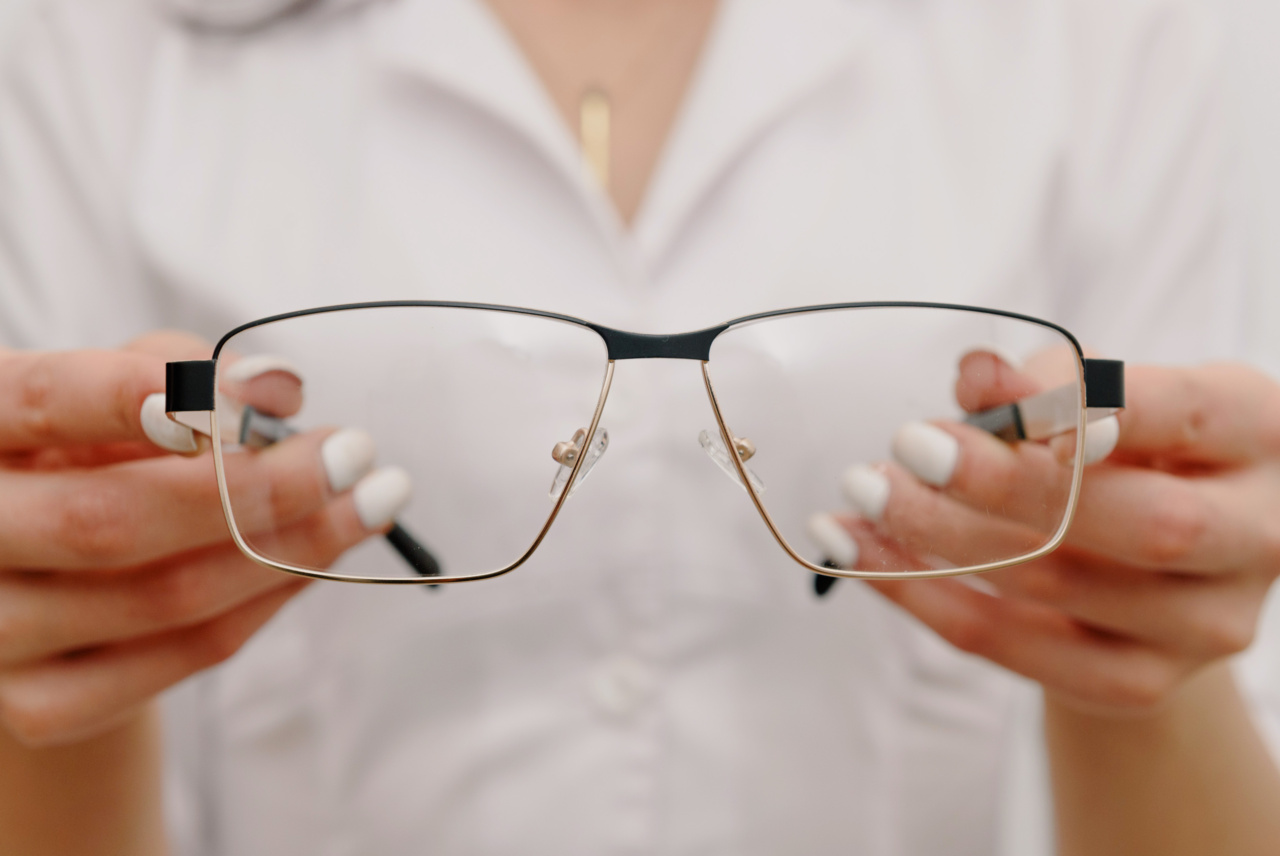Blurred vision, as the name suggests, is a condition where your eyesight becomes unclear. This can affect your ability to read, drive, or even see objects clearly. Depending on the underlying cause, blurred vision can be temporary or long-term.
Here are some of the possible causes of blurred vision:.
1. Refractive Errors
Refractive errors such as myopia (nearsightedness), hyperopia (farsightedness), and astigmatism can all cause blurred vision. These conditions occur when the shape of your eye prevents light from focusing properly on your retina.
This can be corrected with eyeglasses, contact lenses, or surgery.
2. Cataracts
A cataract is a clouding of the eye’s lens that can cause blurred vision and sensitivity to light. Cataracts can be age-related or caused by factors such as eye injuries, smoking, or diabetes.
In most cases, cataract surgery is needed to remove the cloudy lens and replace it with an artificial one.
3. Glaucoma
Glaucoma is a group of eye diseases where the pressure inside the eye damages the optic nerve. This can cause blurred vision, headaches, and even blindness if left untreated.
Eye drops, oral medication, laser surgery, or conventional surgery can be used to treat glaucoma.
4. Macular Degeneration
Macular degeneration is a condition where the central part of the retina deteriorates, causing blurred or distorted vision. This condition primarily affects people over the age of 50 and can lead to permanent vision loss if left untreated.
Treatment options range from medication to surgery, depending on the severity of the condition.
5. Diabetes
Diabetes can cause blurred vision due to high blood sugar levels that damage blood vessels in the retina. This condition is known as diabetic retinopathy and can lead to permanent vision loss if left untreated.
Treatment options include controlling blood sugar levels, medication, and laser surgery.
6. Migraines
Migraine headaches can cause blurred vision, along with other symptoms such as a headache, sensitivity to light, and nausea. Migraine-associated blurred vision is usually temporary and resolves on its own.
However, if you experience frequent migraines, you may need preventive medication.
7. Medications
Some medications can cause blurred vision as a side effect. These may include antihistamines, antidepressants, steroids, and some medications used to treat high blood pressure.
If you experience blurred vision as a side effect of medication, talk to your doctor about alternative treatments.
8. Eye Infections
Eye infections such as conjunctivitis (pink eye) and keratitis (infection of the cornea) can cause blurred vision, along with other symptoms such as redness, itching, and discharge.
Treatment for eye infections may include eye drops, antibiotics, or antiviral medication.
9. Dry Eye Syndrome
Dry eye syndrome occurs when your eyes don’t produce enough tears or the tears evaporate too quickly. This can cause blurred vision, along with other symptoms such as dryness, burning, and redness.
Treatment options for dry eye syndrome include eye drops, medication, and lifestyle changes.
10. Trauma
Trauma to the eye can cause blurred vision, along with other symptoms such as pain, swelling, and bruising. Depending on the severity of the injury, treatment options may include medication, surgery, or rest and ice.
How to Treat Blurred Vision?
The treatment for blurred vision depends on the underlying cause. If you experience blurred vision, you should see an eye doctor for a comprehensive eye exam.
Depending on the results, your eye doctor may recommend one or more of the following treatment options:.
1. Eyeglasses or Contact Lenses
If you have a refractive error such as myopia, hyperopia, or astigmatism, eyeglasses or contact lenses can help correct your vision and reduce blurred vision.
2. Surgery
If you have cataracts, glaucoma, or macular degeneration, surgery may be needed to remove the cloudy lens, reduce the pressure inside the eye, or repair the damage to the retina.
3. Medication
If your blurred vision is due to diabetes, migraines, or eye infections, medication may be prescribed to treat the underlying condition.
4. Lifestyle Changes
If you have dry eye syndrome, making lifestyle changes such as taking breaks from screens, using a humidifier, and avoiding wind can help reduce your symptoms.
When to See a Doctor?
If you experience persistent or sudden blurred vision, you should see an eye doctor immediately. This is especially important if you also experience other symptoms such as headache, eye pain, or sudden vision loss.
Conclusion
Blurred vision can be a symptom of a serious underlying condition, so it’s important to see an eye doctor for a comprehensive eye exam if you experience persistent or sudden blurred vision.
Depending on the results of the exam, your eye doctor may recommend eyeglasses, contact lenses, medication, surgery, or lifestyle changes to treat your condition.






























